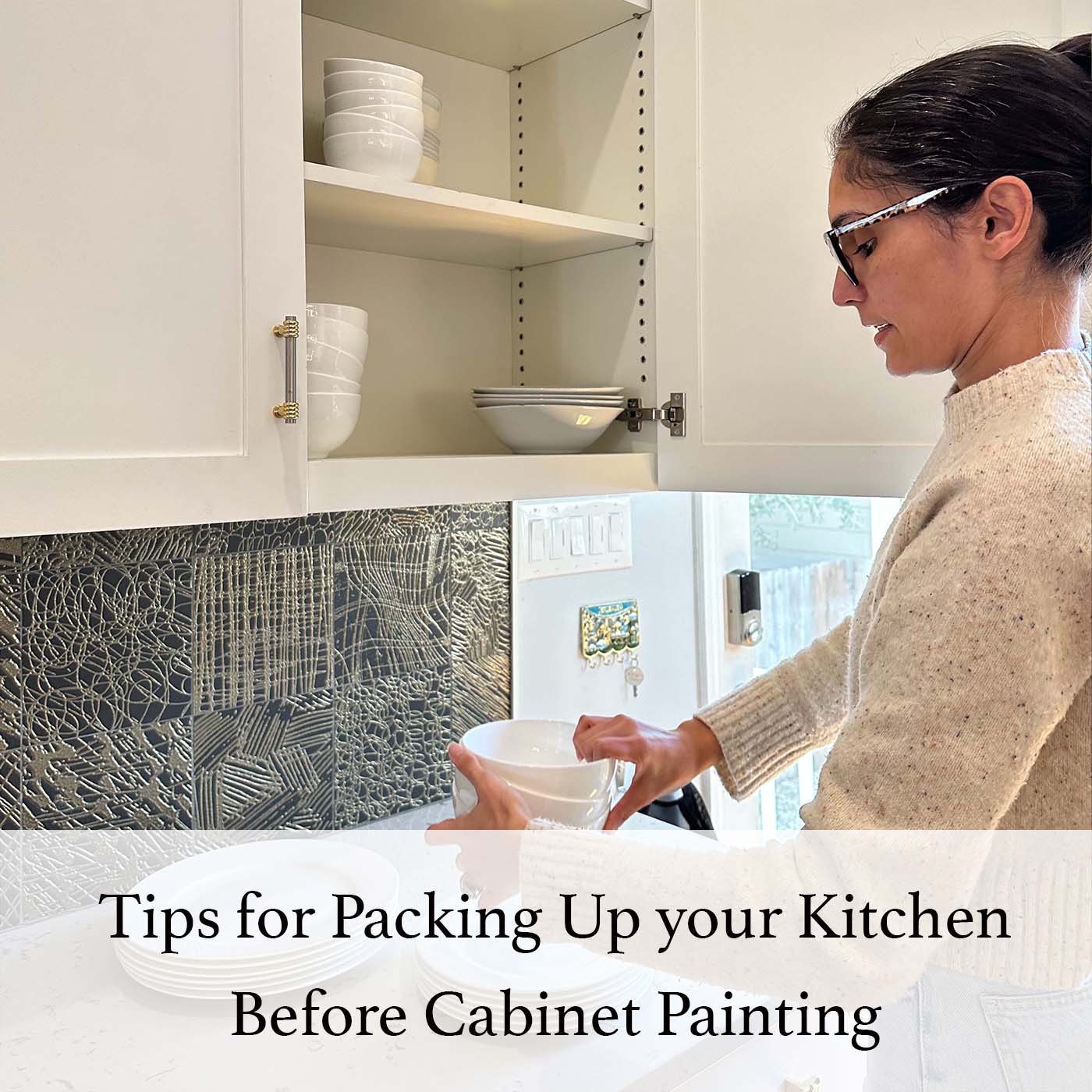“Why is it so expensive to paint a house? Why is there such a wide range in the estimates I get?” You grumble to your partner as you’re looking at three widely different bids. You really liked the most expensive guy (of course), but the cheaper guy’s price is just hard to ignore. Is the top guy too expensive, or is the other guy cutting corners? How do you know??
My wife likes to say that, if you don’t already know what painting a home should cost, getting an estimate can feel like going to the car mechanic. You might know what you want done, but you have no idea what is a fair price, or where the mechanic might be trying to pull a fast one. Not a bad analogy.
So you want your house painted, or a portion thereof. You want to pay fairly for what it’s actually worth, but you don’t want to get ripped off. We get it. We’re right there with you. So how do you do that? How do you get a good quality paint job at a fair market price? What should house painting cost in Austin, or San Antonio, or wherever you live?
If you’re getting multiple bids, you’re probably seeing a wide range of pricing for your project. Please don’t just look at the number at the bottom of the page. Evaluate those estimates carefully so you can choose wisely. If you got an estimate from Paper Moon Painting, then odds are, we’re not the guys with the lowest price, but there are very good reasons for that. We’ll show you what factors affect a painting estimate, and why you probably don’t want to go with the cheapest bid.
If you’re wondering why is it so expensive to paint a house, it’s time to get empowered and informed.
Here are 3 things you can do to make an informed decision when getting painting estimates.
1. Start with your expectations.
Do you want top-notch quality? You’d better tell your estimator at your consultation. Otherwise you might be getting a cheap bid that’s for a fast, “blow and go” paint job, which won’t make you happy and will waste your money to boot.
Really think about this one. “What’s my ultimate goal for getting my home painted?” Do I want my place made perfect again, like when I first moved in? or do I just want to slap a quick coat of paint on this house that we’ve outgrown, so we can sell it? Do I want to fix the previous bad paint job, with drips on the woodwork and wavy lines around my doors and windows? or do I just want to do a quick color change? These are completely different goals, with very different price points.
Along with that, ask yourself, “What are my quality expectations?”
Will you get out your flashlight and magnifying glass to check for tiny imperfections when the paint job is done? (Don’t laugh, people actually do this.) We’re not talking about obvious flaws, but little imperfections that wouldn’t be noticed without said magnifying glass and flashlight. (By the way, the industry standard is to evaluate a painted surface from a minimum of 3 feet, without magnification, and under normal lighting conditions. No MagLites and magnifying glasses, please!)
Or is it okay if a little “charm” is still showing after the paint job, especially for an older home? After all, we can spend the extra time to get it all “perfect” for you, but it’ll cost quite a bit more, and usually isn’t worth the extra investment. (Law of diminishing returns, and all that.) Most likely, the guy with the cheapest bid is pricing your job NOT for the “perfection” expecation, but for the “just enough to look good at a quick glance” standard.
Different quality expectations come with different price points. Explain to your estimator what your expectations are. Otherwise, you’re probably getting the default “minimal quality” estimate, especially if the painter’s estimate is significantly lower than other painting companies’ bids. It’s not always the case, but most of the time, the single biggest factor in why it is so expensive to paint a house, is the level of quality the painter can deliver.
2. Compare apples to apples.
You’ve got two different painting bids. Is one painter’s estimate for two coats, and the other’s estimate for just one? Is one estimate including minor repairs to the surface texture, and the other just throwing a coat of paint on whatever is already there, even if flawed or damaged? (Those texture flaws will still show even with a new color put on top.) Does one estimate include paint, and the other doesn’t? Is the paint a decent quality? (If paint is an add-on, it’s often marked up. Another hidden cost.) Does one estimate include a warranty, or perhaps free annual touch-ups on interior walls, like we do? I’ve been floored by the “loss leader” estimates I’ve seen out there, often from national franchises. Beware the cheap bid that balloons once you’ve added “upgrades” like a second coat, or quality paint.
3. Ask knowledgable questions about each painting company. Find out where they stand on the items below.
I’ve always wanted to discuss this openly. I’ve seen enough low-ball estimates to wonder: How can that guy’s price be half of mine? How is that possible?? I know what our profit margin is, and if everything goes perfectly (which it seldom does), we keep only 15% of any given project. That’s not bad, you might say, but then 10% will go to pay our taxes. So when it’s all said and done, if there are no problems, the owners will put 5% in their pocket. (I’ve been told I’d be better off putting my money in the stock market, with it’s historical average of 8% returns, and avoid the headache of running a business. But, corny as it is, I just can’t stay away from beautifying people’s homes.) So how can the other guy do it for half? Well, I thought you’d never ask.
It all comes down to “overhead”.
I know “overhead” is a dirty word, but it actually provides serious benefits that you want as a consumer. Overhead means the company is minimizing your risk. It’s reducing your stress. It’s making sure you don’t regret hiring them later, by paying for items that will ensure a quality paint job, done on time, with a good experience for you. These things don’t come free, and trust me, you don’t want to hire a painter without them. If you’re hiring the cheapest guy, you will give up something in order to get that low price, and that something will affect you. Here are a few of the possibilities:
- Reliable customer service.
You may be thinking, “Hmph. For half price, I’ll take a little less customer service, thank you.” That’s fine, until you have an issue. If you’re dealing with the contractor who’s just a guy and his friend in a truck, they “are” your customer service department. There is no higher power to appeal to, if there’s a disagreement. They may not answer your phone call when they’re an hour late and you need to leave for work already. And if you’re dealing with a low-bid contractor, I assure you they will be hesitant to issue refunds or negotiate free repairs. Since they’ve slashed prices, their margins are razor-thin already, so they can’t hire someone to answer the phone whenever you call. Better companies have people whose sole job is to provide constant communication, give direct answers, and provide clarity, so you’re not left wondering why your fly-by-night painter is ghosting you or whether you need to schedule time off work to deal with the latest headache.
- Insurance and protection when things go wrong.
This is a big one, so please, for your own sake, listen close.
In our early days, years ago, we had some near-disasters.
Ever seen a pile of oil-soaked rags spontaneously combust? Did you know that the rags that are used to apply oil-based stain to raw wood can burst into flame when left in an innocent-looking heap? You read that right: they can catch on fire for no apparent reason. If I hadn’t seen it with my own eyes, I wouldn’t believe it either. But we have had two instances where we came inches away from completely burning down million-dollar homes. The first one was in a garage. The rags we’d used to apply stain that day were sitting on top of a small table in the middle of the empty three-car garage. Sometime after we left the project that evening, the rags combusted, burned the table to the ground, and luckily wound up on a cement floor where nothing else caught fire, and just burned themselves out.
The second time was nothing short of a miracle. We were on a different project this time, a large new construction project out in the countryside. The rags caught fire and melted the neighboring PVC pipe from the plumbing (which hadn’t yet been covered up with sheetrock). Water gushed forth from the melted pipes and put the fire out.
In both cases, our liability insurance would’ve kicked in, to make sure the homeowner didn’t have to pay a penny out-of-pocket to fix any damage or rectify the situation. (And no worries on future stain work: we’ve since standardized our painting processes, and each of our teams has fire-proof containers for stained rag disposal. An “overhead” expense, but totally necessary.)
Look, sometimes bad things happen to good projects. When they do, you need to make sure that whoever is involved is fully and completely insured, otherwise you’ve got big problems. If someone falls off a ladder in or around your home and gets seriously hurt, that contractor better be carrying workman’s compensation, or you may be getting a call from one of those TV lawyers to pay for the worker’s injuries (and probably “pain and suffering” to boot). And this is a significant reason why you might be getting a half-price bid. Insurance is very expensive, as we all know from our personal lives. Reputable companies have multiple types of insurance, to protect you (and themselves) on all fronts. They’ll have general liability insurance, workman’s compensation, and commercial auto insurance for their vans. But not having these types of insurance is just not an option.
- Safety training.
We’ve all seen the internet memes of a painter standing on stacks of paint cans to reach a high ceiling spot, or nailing up planks of wood to rig a makeshift scaffold that looks like it would collapse if you sneezed near it. I’ve seen practices that make my hair stand on end. Safety is one area where you don’t want shortcuts taken, not in your own home. Good companies have systems of safety training for their painters, which take time and money to implement. Cheap painters don’t.
- Warranties, and the longevity to honor them.
It’s hard to collect on a warranty if no one is there to collect from. This is pretty self-explanatory, but who will you call in two years if your watered-down exterior paint starts breaking down prematurely, or your cabinet paint is flaking off because the painters skipped the proper prep before painting? Good companies have warranties for this sort of thing, so you’re not paying twice for what should’ve been done right the first time. Even better, they have training programs for their painters, so that they DO get it right the first time, without cutting corners like watering down paint or not bothering to clean your cabinets before priming. (We’ve seen both.) Again, training programs take time and money. Cheap painters can’t afford this, and may not be there when you have a warranty item a year later.
- A company culture that ensures its painters a living wage and good benefits.
We’re talking about things like health insurance, in an industry not known for taking care of its workers. The saying is true, “Happy cows make good cheese.” You might be one of those few people who really doesn’t care how well the painters are taken care of by their boss, but I doubt it. For the vast majority of our customers, this matters. Sure, we could reduce overhead by eliminating health insurance and paying dirt-cheap wages, but we don’t want to. We don’t think money is the highest prize in life, and we want to be able to look in the mirror and know we’ve done right by people. Happily, most of our customers feel the same way.
- Employees rather than subcontractors.
Cheap painters are known for using sub-contractors, rather than full-time employees. Why? Because it cuts down on their overhead when they don’t have to pay things like social security or payroll tax, like they would for employees. But this is a very insecure system for the painters. Good painters who know their worth will be found in companies who commit to them and take them on as employees, rather than using them occasionally as subs on an “as-needed” basis (which is the very definition of being a sub-contractor). Why should this matter to you? We explain in depth here, but in a nutshell, sub-contractors will go wherever the pay is better, often leaving you in the lurch. This is a big reason why your contractor suddenly disappears mid-project, saying his truck is broken down, has yet another death in the family, or gets suspiciously ill (he looked just fine yesterday). Most likely, he’s figured out he can’t make enough money on your project at the low price he quoted, or he’s been offered a much more lucrative project elsewhere, and now you’ll be just a side project that he does sporadically on evenings and weekends. (Sub-contractors are also incentivized to get a project done as quickly as possible, so they can move on to the next paying gig. Working too fast and taking shortcuts doesn’t bode well for your project.)
Bottom line? The painters with the lowest bids are probably using subs, just to avoid the overhead of having dedicated employees.
- Careful screening of who’ll be working in your home, around your kids and valuables.
Character matters, not just painting skill. How carefully do you think the cheapest painter is vetting his guys? We run background checks, screenings, and motor vehicle reports on all applicants who want to work for Paper Moon Painting. (Plus we look for general friendliness, so you’re not saddled with a grumpster in your home all day.) These steps cannot be overlooked if one is putting workers in other people’s homes. Doing all this takes time and money, but we think it’s worth the overhead, to give our customers peace of mind. (By the way, only about 1 in 10 painters makes it through our screening system. Where are the other nine painters going? To work for our competitors, probably the ones giving you those cheap bids!)
Look, I really hate to end on a sour note. Revamping your home should be a very enjoyable experience. You should be working with someone who is a fellow collaborator, enjoys what they’re doing, and genuinely cares about your home. I know that price has to be a factor, there’s no way around it. Just don’t make it the only factor, or even the most important one. I’m almost positive you don’t buy the cheapest car, the cheapest sheets, the cheapest sofa, or even the cheapest sandwich meat, for that matter. Your paint project should be no different. A good paint job should last a decade or more, so make the best decision for your home and family, and not the cheapest one. Hopefully you now know some of the factors that account for why it is so expensive to paint a house, and can evaluate any potential painters wisely!







